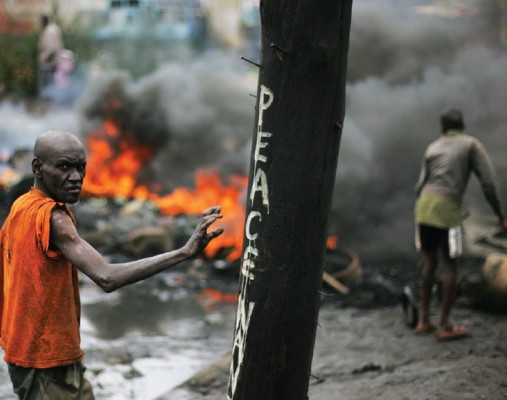
When the previous issue of Peacebuilder went to the printer on January 7, 2008, it contained uplifting thoughts from Jebiwot Sumbeiywo, a 2004 MA graduate of CJP who lives in Kenya and is the continental coordinator for Coalition for Peace in Africa.
In that pre-press version of Peacebuilder Sumbeiywo spoke of how pleased she was that Kenya had sustained its democracy and its peace since the late 1990s, all the way through its 2002 general election. This was a change from the violence-plagued elections in 1992 and 1997, when thousands of Kenyans had been killed and hundreds of thousands displaced.
“I have just come from town having met with the local press where peacebuilders made a press statement on violence that affected some parts of Kenya,” Sumbeiywo wrote to friends in November 2006. “It’s amazing how people no longer sit and watch violence escalate out of hand – kudos to all of us.”
A week after Peacebuilder went to the printer – at the color-proof stage, the last moment when pages can be changed – the editor rushed to remove Sumbeiywo’s optimistic thoughts about Kenya.
Kenya had exploded. “It was really terrifying,” Sumbeiywo recalled recently. She and her one-month-old baby – named “Amani,” meaning “Peace” in Kiswahili – were caught at home in a Nairobi neighborhood. “My world changed in two days from peace to disaster. We were suddenly unable to buy food. I would watch from my window as youths ran up and down the streets being chased by riot policemen. Things got so bad I stopped thinking about anything but survival.”
It was like 1992 again, only the toll was higher. By the time the violence wound down in late January, at least 1,000 had lost their lives; more than 350,000 had been forced to leave their homes.
What happened? And what did CJP-trained peacebuilders in Kenya do about it? Can Kenya remake itself into a model of democracy, economic prosperity and peace in Africa – or will it devolve into the opposite?
Stories in this issue:
